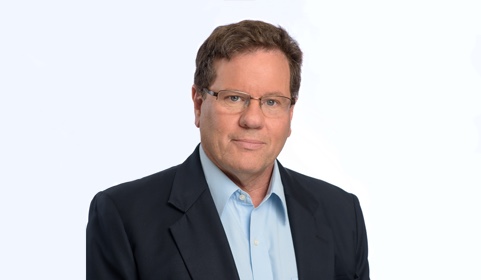USA: Favorable Decision on Patent Eligibility for Isolated DNA

The U.S. Court of Appeals for the Federal Circuit (CAFC) rendered a precedent-setting decision on August 16, 2012, in the Myriad1 case that affirmed patent eligibility of isolated DNA molecules. The CAFC decision clears up some uncertainty in patent eligibility of biological products and personalized medicine claims that existed following the US Supreme Court decision earlier this year in the Mayo matter2.
Background
Myriad Genetics and scientists at the University of Utah isolated the genes – BRCA1 and BRCA2 that are associated with breast cancer and developed a diagnostic assay3 to test for predisposition to breast cancer making use of the isolated gene sequences. US patent applications were filed and patents eventually issued related to this discovery had been issued directed, among others to DNA sequences and diagnostic and screening methods that make use of the DNA sequences or transformed cells. Several public groups that advocate against patenting of gene sequences, filed a law suit alleging that gene sequences are products of nature and thus not eligible for patent protection. In 2010, The Federal District Court in New York, ruled in favor of these groups and declared the Myriad patents4 at issue to be invalid.
The case was then appealed to the CAFC which in July of 20115 ruled that DNA isolated from the body is "markedly different" in its nature from the DNA inside the body and hence, patent eligible. This decision was appealed to the US Supreme Court.
In March 2012, the US Supreme Court laid down its decision in Mayo concluding that claims which are in effect directed to an underlying law of nature are not patent-eligible. The Mayo decision was received with widespread concern regarding patent eligibility of an extensive variety of technologies, particularly (but not only) those involving a naturally derived composition of matter or use of same. Patent eligibility of isolated DNA and its use in diagnostics was of particular concern.
Following its Mayo decision, the Supreme Court remanded the case back to the CAFC. The CAFC decision in Myriad was very much awaited by the biotech industry, given its vast effect on this industry.
The Myriad Decision
The claims that were in question were 15 claims in the 7 Myriad patents6 directed to (i) isolated DNA molecules, (ii) diagnostic methods for determining predisposition to breast cancer in which DNA sequences are compared or analyzed, and (iii) method for screening potential cancer therapeutics which make use of transformed cells.
In a split-decision the CAFC reaffirmed its previous decision and found that isolated DNA molecules constitute patent-eligible subject matter. The majority opinion found that isolated DNA molecules are not found as such in nature but rather are a "product of human ingenuity"7 Citing the Supreme Court's 1980 Chakrabarty decision8 the Court noted that there is a clear difference between compositions that appear in nature and others that are a result of human intervention, which has imparted "markedly different" or "distinctive" characteristics9 Thus, the Court concluded that an isolated molecule is not a law of nature per se and, therefore, is patent-eligible, even though laws of nature are, of course, involved in determining their characteristics.
The result was different for the diagnostic methods. In the Mayo decision the Supreme Court concluded that for diagnostic methods to be patent eligible they must encompass more than the natural laws and their applications. Based on the Mayo decision, the Court unanimously held that the diagnostic methods at issue in Myriad were not patent eligible. In reaching its decision, the Court relied on the Supreme Court's rulings in Mayo and in Bilski 10 and concluded that since diagnostic methods were directed to abstract mental steps of "comparing" or "analyzing" they were not patent-eligible. The Court noted that while abstract ideas may be included in patent-eligible processes, in order to be patent-eligible, the claim cannot rely solely on such an abstract idea. As these claims did not recite specific physical embodiments they were found to be patent-illegible; but the Court noted that had such embodiments been included, the claims might have been held patent-eligible.
As for the screening methods, the Court reached a unanimous conclusion that they are patent-eligible. In arriving to this conclusion the Court noted that the claims "include more than the abstract mental step of looking at two numbers and "comparing" two host cells' growth rates"11 Other than abstract mental steps the claims recited the use of transformed cells that "are a product of man, not of nature", and this is of a non-naturally occurring, and thus patent-eligible, composition of matter.12 This renders the claim to the screening method to be patent-eligible.
Conclusion
This decision confirms patent eligibility of isolated DNA molecules, one of the foundations of the biotechnology industry. However, this decision clarifies that in claims directed to diagnostics or screening methods, care must be taken to include some physical embodiments beyond the mere recitation of use, e.g. of a certain DNA molecule. By way of example, reciting definitive physical means of carrying out the method may have rendered it more likely that the claims in Myriad would have been considered to be patent-eligible.
In most cases, proper claim drafting may render a certain method as patent-eligible by the patent eligibility criteria laid down in Bilski, Mayo and Myriad. Thus, in preparing claims for US patent applications for inventions concerning screening or diagnostic methods, care must be made to avoid language that may be regarded as a mere abstract mental step.
It should be borne in mind that this important decision was issued in a 3-judge panel and the decision can be overturned by a larger panel of the CAFC, e.g. an en banc decision and even a future three-judge panel of the same Court may arrive at a different conclusion. However, it stands to reasons that this state of the law will not change any time soon.
At least for the time being, the biotech industry can make a big sigh of relief.
1 Assoc. for Molecular Pathology, et al. v. USPTO et al., decided August 16, 2012. One of the defendants in this case, and the party of real commercial interest was Myriad Genetics Inc.
2 Mayo Collaborative Services v. Prometheus Laboratories, Inc., decided on March 20, 2012.
3 Costing about $3,000
4 U.S. Patents Nos. 5,747,282, 5,837,492, 5,693,473, 5,709,999, 5,710,001, 5,753,441, and 6,033,857.
5 In a split, 2-to-1, decision
6 Claims 1, 2, 5, 6, 7, and 20 of U.S. Patent 5,747,282; claims 1, 6, and 7 of U.S. Patent 5,837,492; claim 1 of U.S. Patent 5,693,473; claim 1 of U.S. Patent 5,709,999; claim 1 of U.S. Patent 5,710,001; claim 1 of U.S. Patent 5,753,441; and claims 1 and 2 of U.S. Patent 6,033,857.
7 "The isolated DNA molecules before us are not found in nature. They are obtained in the laboratory and are man-made, the product of human ingenuity" (paragraph bridging pages 38 and 39 of theMyriad descision).
8 Diamond v. Chakrabarty 447 U.S. 303, decided June 16, 1980
9 "[T]he Supreme Court has drawn a line between compositions that even if arrayed in useful combination or harnessed to exploit newly discovered properties have similar characteristics as in nature, and compositions to which human intervention has imparted ‘markedly different' or ‘distinctive' characteristics" (page 44 of the Myriad descision.
10 Bilski v. Kappos ,decided June 28, 2010
11 Page 60 of the Myriad descision.
12 "The transformed, man-made nature of the underlying subject matter in Claim 20 makes the claim patent-eligible. The fact that the claim also includes the steps of determining the cells' growth rates and comparing growth rates does not change the fact that the claim is based on a man-made, non-naturally occurring transformed cell – patent-eligible subject matter." (Page 61 of the Myriaddescision)
אין באמור במאמר כדי להוות עצה, הדרכה, ייעוץ או חוות-דעת בנושא, והוא מוגש כשירות ללקוח להעשרה כללית בלבד ולא לכל מטרה אחרת. בכל נושא ספציפי יש לפנות לעורכי הדין או עורכי הפטנטים הרלוונטיים במשרדנו.
